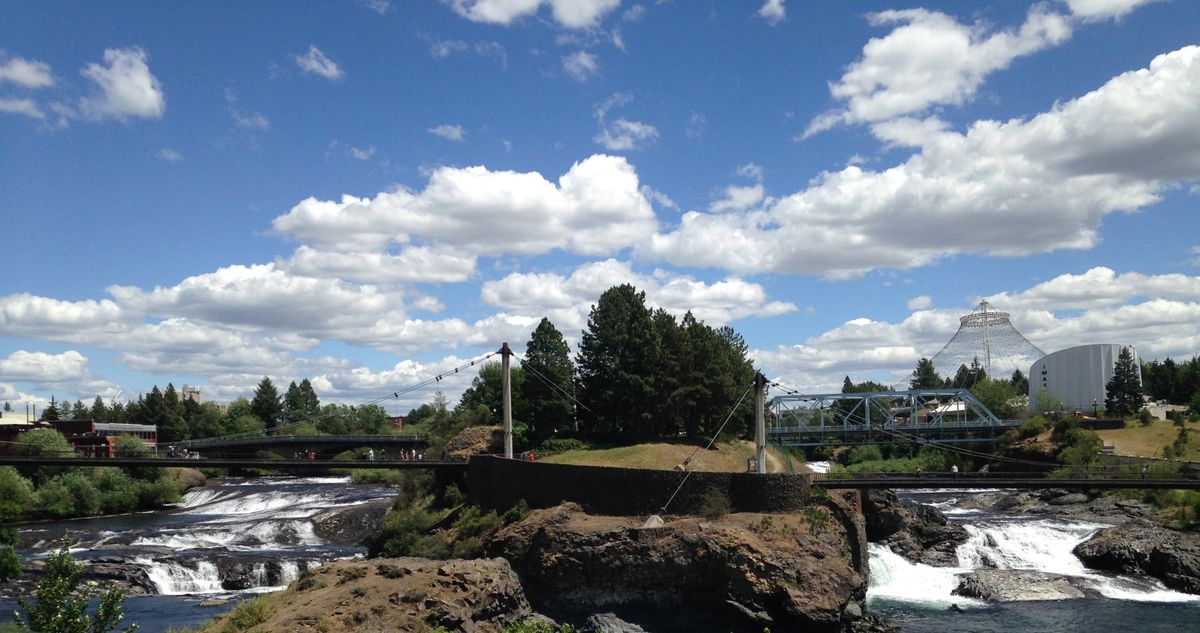Then and Now: Spokane River middle falls
Circa 1888: The wooden structure at the lower left is an early Spokane water works, which likely featured water turbines to drive pumps to get the water up to street level. The small brick mill in the center, on the edge of what is now called Canada Island, is the Echo Roller Mill, one of several around the falls that produced flour from local grains using water-powered machinery. The 1888 Howard Street bridges, seen in the distance, were the first access across the river downtown, and the first Monroe Street bridge, made of wood, came a few years later. This photo predates the first hydroelectric dams, which began construction around 1890.
For centuries the falls of Spokane attracted Native Americans for salmon fishing in May and June. When white settlers began gathering around the falls, creating a settlement at what is now Howard Street and Spokane Falls Boulevard, it was for the power of the water, pushing wheels to mill wheat and saw lumber.
Later, generating electricity became the most important function of the falls.
Through the 120-plus years since the above photo was taken, men have drastically changed the bed and banks of the river, blasting channels open and removing boulders and outcroppings that were in the way. Areas were filled in and smaller waterways were channeled into culverts.
Man-made control over the river’s course created the foundations for plants like the Spokane Mill Co., a lumber mill that took up much of the west end of Riverfront Park. Spokane Mill Co. employed 300 men in 1890.
– Jesse Tinsley
